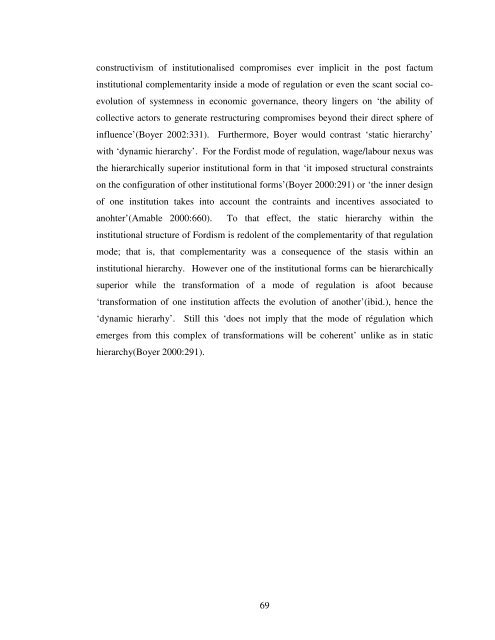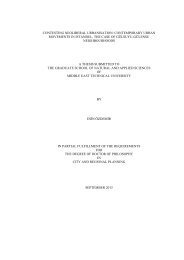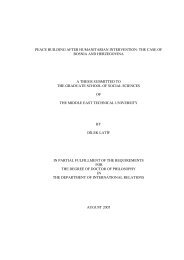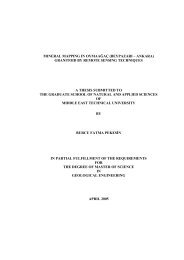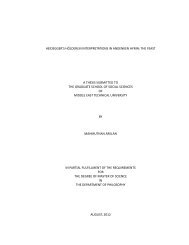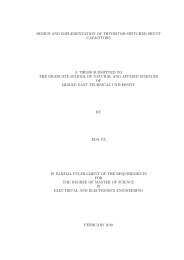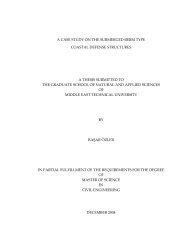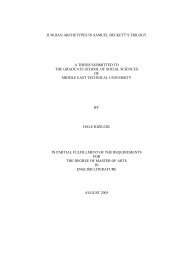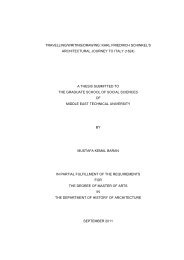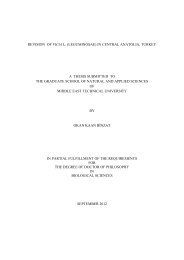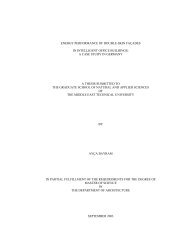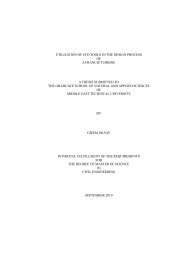View Original - Middle East Technical University
View Original - Middle East Technical University
View Original - Middle East Technical University
Create successful ePaper yourself
Turn your PDF publications into a flip-book with our unique Google optimized e-Paper software.
constructivism of institutionalised compromises ever implicit in the post factum<br />
institutional complementarity inside a mode of regulation or even the scant social co-<br />
evolution of systemness in economic governance, theory lingers on ‘the ability of<br />
collective actors to generate restructuring compromises beyond their direct sphere of<br />
influence’(Boyer 2002:331). Furthermore, Boyer would contrast ‘static hierarchy’<br />
with ‘dynamic hierarchy’. For the Fordist mode of regulation, wage/labour nexus was<br />
the hierarchically superior institutional form in that ‘it imposed structural constraints<br />
on the configuration of other institutional forms’(Boyer 2000:291) or ‘the inner design<br />
of one institution takes into account the contraints and incentives associated to<br />
anohter’(Amable 2000:660). To that effect, the static hierarchy within the<br />
institutional structure of Fordism is redolent of the complementarity of that regulation<br />
mode; that is, that complementarity was a consequence of the stasis within an<br />
institutional hierarchy. However one of the institutional forms can be hierarchically<br />
superior while the transformation of a mode of regulation is afoot because<br />
‘transformation of one institution affects the evolution of another’(ibid.), hence the<br />
‘dynamic hierarhy’. Still this ‘does not imply that the mode of régulation which<br />
emerges from this complex of transformations will be coherent’ unlike as in static<br />
hierarchy(Boyer 2000:291).<br />
69


